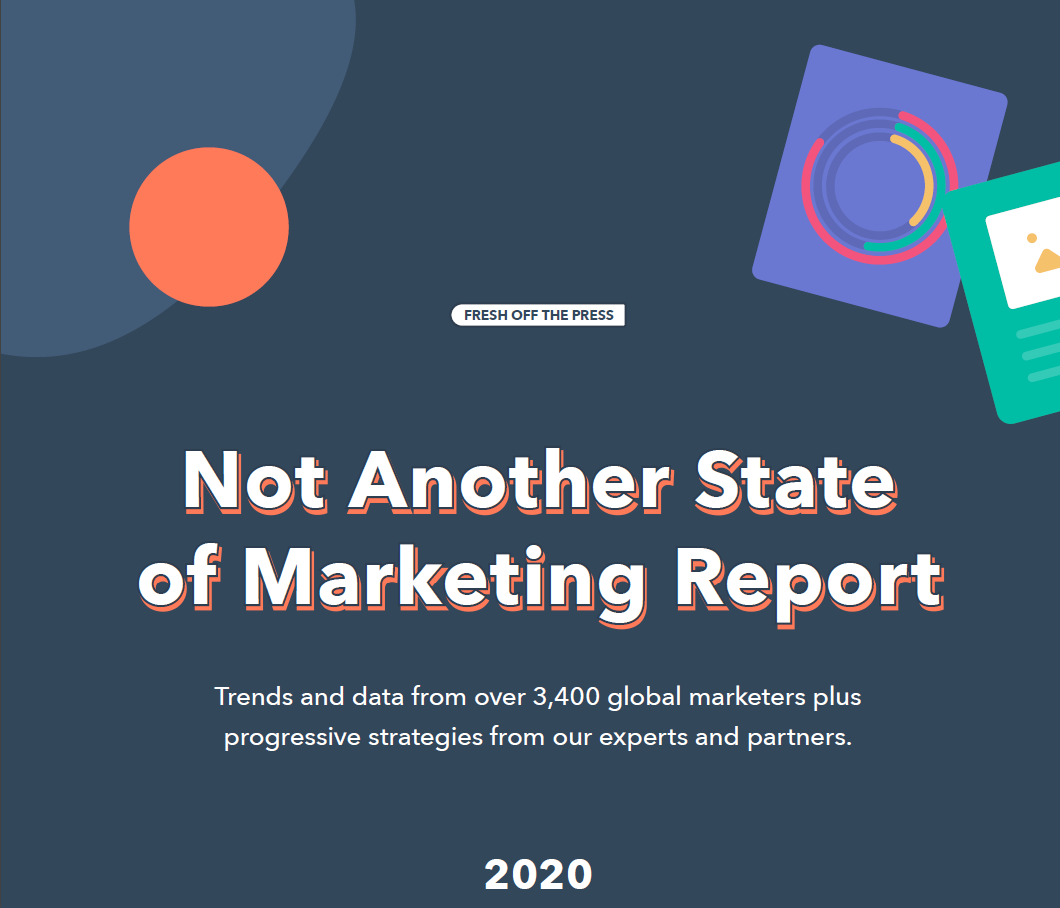
What happens when you collect data from 4,500 marketers and salespeople from around the world? You get a snapshot of what inbound marketing looks like in 2016. HubSpot's State of Inbound report gives business people and marketing strategists and in-depth look at where inbound is and where it is going. These insights will help you build your business this year and in the year to come.
1. Inbound Marketing Works Inbound marketing has a reputation as a softer, more subtle form of marketing. You're providing content that builds a relationship, you're not using outbound sales to bring new clients into your office or website. Is all of this content creating and relationship building paying off in leads? According to HubSpot, the answer is yes. "Our survey revealed outbound marketing teams have more trouble proving ROI, securing budget, and training their team compared to their inbound counterparts" while inbound marketers were very satisfied with their business performance and return on investment.
Who's reaping the benefits of inbound marketing? According to the HubSpot report, nearly 90 percent of e-commerce organizations, 84 percent of marketing agencies, and 78 percent of software companies are involved in inbound marketing. If you're in a different industry, this gives you an advantage, and you can leap onto the inbound train earlier than others in your area of business.
2. It's Important to Track Your Success You feel that your marketing strategy is working, but do you really know? HubSpot states that organizations that track the ROI of their inbound marketing efforts understand the effectiveness of their marketing strategies and can adjust them accordingly: "72% of organizations that calculate ROI say their marketing strategy is effective." Collecting data about the successes and failures of your marketing strategies allows you to more effectively hone those strategies, increasing your business success.
3. Marketing and Sales Need to Happen Hand in Hand Is your marketing team talking to your sales team, and vice versa? To improve the results that you get from your marketing strategies, you need to have open communication between the two parts of your organization. In fact, "there is no combination of factors more strongly correlated with marketing success than being both inbound and having an SLA," according to data collected for HubSpot's inbound report.
To create an effective alignment between sales and marketing, it's best to develop a service level agreement (SLA). This involves defining buyer or client personas, come to an agreement on what a lead is and what the stages of the organization's sales funnel look like, develop a process for managing leads, set goals for sales, and track metrics. This level of communication between sales and marketing results in far better results from your inbound marketing efforts.
4. Marketers Fall Down on Data Analysis While not all marketers are weak on data analysis, a shocking "22% of respondents still don't know what a CRM is and 40% continue to use Excel or Outlook to store customer data," according to HubSpot. What does this mean for businesses? While an Excel spreadsheet can store data and has the potential for limited data manipulation, it does not allow marketers to generate the deeper insights that they need. It also takes a lot of time: 29 percent of salespeople stated that they spent an hour or more on data entry every day.
Unfortunately, those with a CRM system are not always happy with the results: according to the report, "only 21% of salespeople said they considered their CRM software's integration capabilities -- with marketing software or other tools -- to be high quality." While a content management system helps you understand your customer relationships, it needs to be powerful enough to integrate your data and provide the reports you need. Understanding leads, motivations, and changes over time requires a more powerful tool than a spreadsheet.
5. Marketers Are Excited About Visual Content In the age of busy, it's harder and harder to get people to engage with blog posts, but video is on the rise. From live Facebook discussions to short blurbs on Snapchat, from Pinterest to Instagram, companies are looking to connect with their leads through more visually-oriented media. However, this doesn't mean that they're abandoning the written format. Writing is still an important base for a company's content strategy, and you can connect those visuals to your written content and shift them into a visual format to create an even stronger inbound marketing plan.
6. It's Even More Important to Generate Qualified Leads Over time, it's getting more difficult for salespeople to connect with leads. This may be because the leads that they receive are not truly motivated to engage with the company. This information highlights the importance of having strong ties between marketing and sales, so that both sides can agree on who a lead is and when they are a strong, qualified lead. That way, salespeople can focus their time on pursuing those leads who are qualified rather than diving into a pool of tepid leads.

7. The Customer is Becoming More and More Powerful According to the State of Inbound report, "salespeople are a last resort for modern buyers," with just 19 percent of people relying on them for purchase decisions. Instead, customers are demanding and receiving more control over their purchasing decisions. They are using messaging apps and social media to talk about products, and they're also using ad blockers to turn off outbound advertising on their devices. According to the report, both marketing and sales need to move from their past roles as outbound salespeople into the role of the helpful advocate: "as power shifts from the seller to the buyer, salespeople are incentivized to be helpful instead of pushy." In this new world of sales, your customers tell you how you should behave, and you need to follow along.
8. Global Priorities Are United For the most part, marketers around the globe had a lot of agreement on their priorities for the coming year. The majority of marketers in countries around the world want to grow overall traffic and convert those leads into customers. They're also focused on SEO and organic traffic development rather than solely focusing on blog content.
At Digital Inbound, we're here to help you decode the world of inbound marketing. We know about the latest trends in the digital world, and we can help your company move into the future with strength and marketing savvy. Contact us today and to request a free Website Competitive Analysis report for your business.

